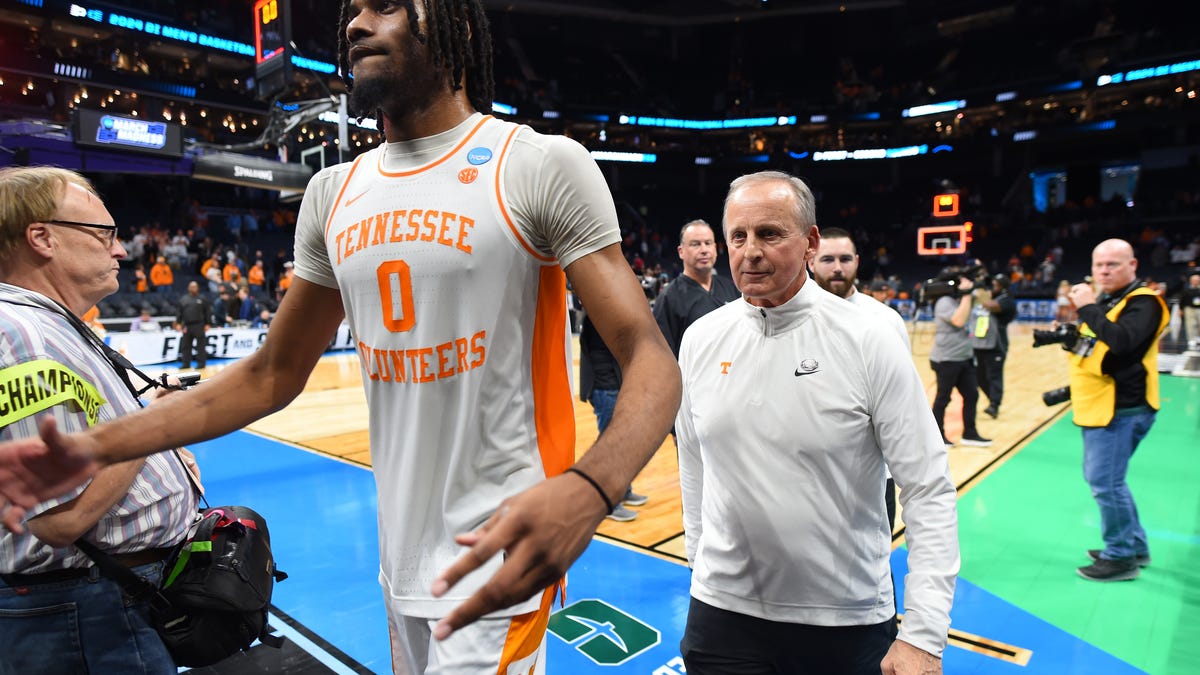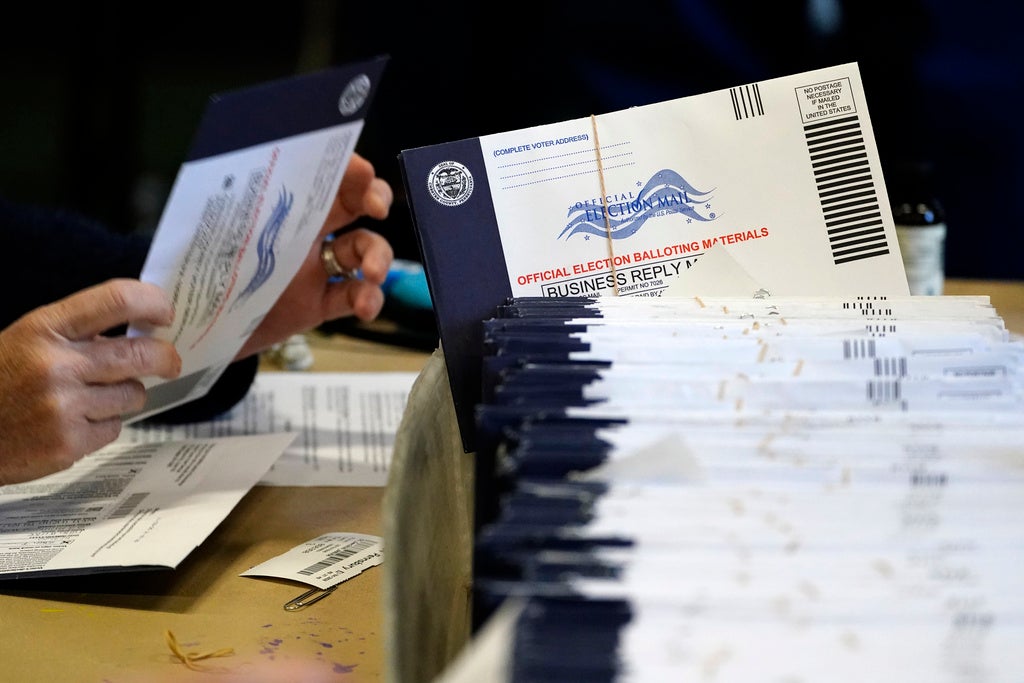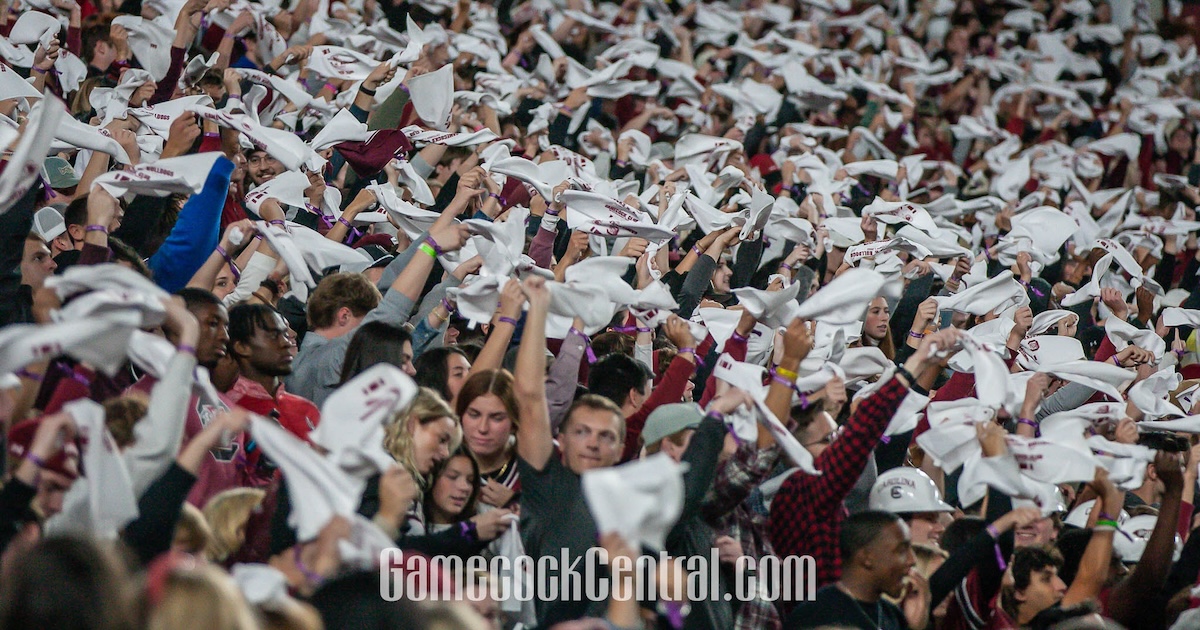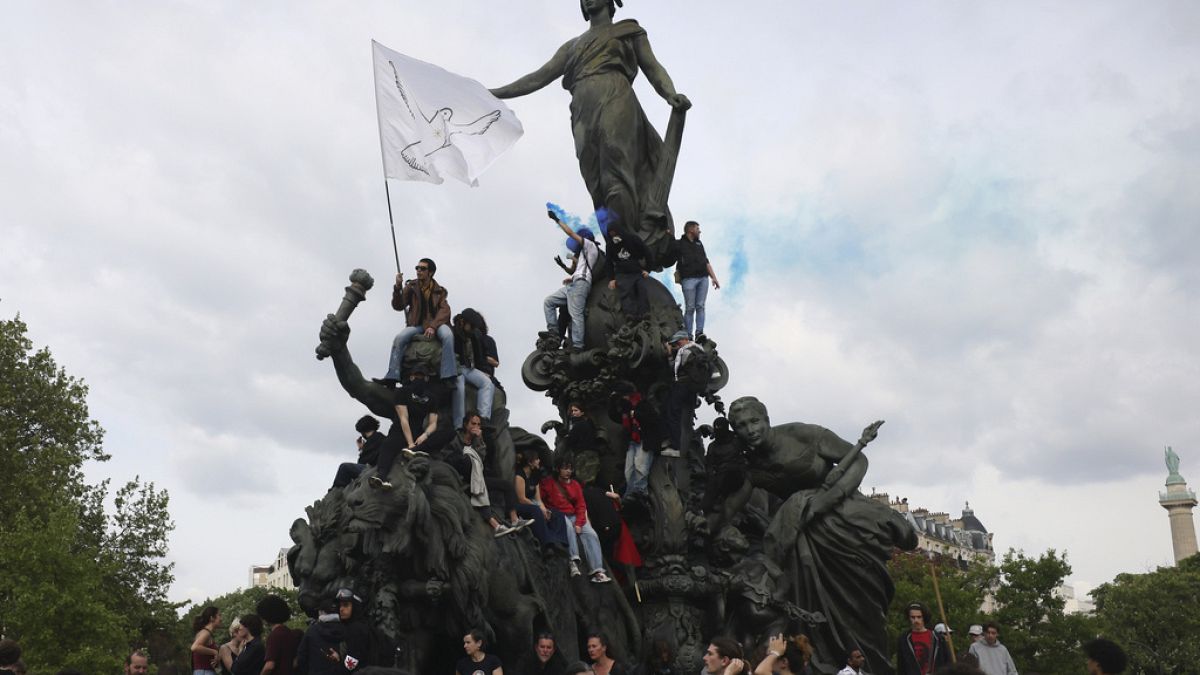Arizona
State Supreme Court upheld Arizona’s abortion ban. What does it mean for university admissions?
Arizona abortion ruling: Gov. Katie Hobbs reacts to near-total ban
Arizona Gov. Katie Hobbs said the near-total abortion ban is ‘extreme and hurts women’ following the state Supreme Court’s ruling on April 9, 2024.
Sahara Sajjadi said this week’s decision from the state’s Supreme Court to uphold a Civil War-era abortion ban was a “letdown.”
“I feel like I’m never shocked when this news comes out, but always profoundly disappointed,” Sajjadi, 22, said.
The graduate student studying at Arizona State University has had a few days to process the Arizona Supreme Court’s decision to uphold a 160-year-old law. The move bans nearly all abortions except in cases to save the life of the mother, and it could be a blow to Arizona’s universities as they seek to attract students from across the country.
The news has reverberated across state and national politics. While Arizona Attorney General Kris Mayes said women and doctors will not be prosecuted under the law, her commitments could still be disputed by a county attorney.
Still, a significant number of students say a state’s access — or lack thereof — to reproductive health care impacts their decision on where to go to college.
Kari Lake acknowledges ‘people are angry’ as abortion debate gets heated
How could the Arizona abortion ban affect higher education?
According to a study published last month by the Lumina Foundation and Gallup, around 71% of students polled said reproductive health care policies factor into their choice on where to go to college. Of them, eight in 10 say they prefer states with fewer restrictions.
This opinion is consistent among a variety of groups regardless of age, gender and political affiliation, says lead researcher Courtney Brown. But women, and Black and Hispanic students polled stronger in favor of fewer restrictions.
“This isn’t just a young person or a female issue,” Brown said.
While there isn’t data that shows an impact in enrollment yet, Brown said it’s a strong possibility fewer students will look to attend universities in states with restrictive reproductive health care policies. A spokesperson with the Arizona Board of Regents, the presiding board over the state’s public university system, said the board doesn’t have available data on the topic.
If she was looking for a school under current circumstances, would the ban affect Sajjadi’s decision?
“Absolutely,” she said. “What student in the modern day, a progressive young person, wants to be in a state that’s adhering to draconian laws?”
Rei Tedoco, 19, said she moved to Arizona from Ohio under the impression that the state had a different political climate. With a new ban coming down, Tedoco said she feels her quality of care is at risk.
“Just knowing that my safety is not number one in the legislature’s eyes is just really disappointing,” Tedoco said.
Arizona previously had a 15-week ban, passed in 2022 before Roe v. Wade was overturned by the Supreme Court. The current law, which serves as a near-total ban, is one of the strictest in the country.
Brown said these findings might affect out-of-state students more as they shop around for options. A drop in out-of-state enrollment would be significant as the state’s public colleges look to them for increased tuition revenue during a time when higher education budgets tighten.
“States are going to have a harder time recruiting students from out-of-state if those students say ‘You know, I’m not going to attend a school in a state that has policies that are counter to what I want,’” Brown said.
The trend extends to medical students as well. The majority of medical students said abortion access factored into their decision on where to accept a residency program, according to a 2023 study from the Journal of Medical Ethics.
Arizona is one of many states battling a shortage in health care professionals.
Recent estimates show more than 14,000 nurses and 3,000 physicians are needed by 2030 to satisfy shortages. The Board of Regents launched the recent campaign, AZ Healthy Tomorrow, to invest in the state’s health care workforce but the outcomes could be affected by where future professionals choose to practice.
Helen Rummel covers higher education for The Arizona Republic. Reach her at hrummel@azcentral.com. Follow her on X, formerly Twitter: @helenrummel.

Arizona
I-15 bridge near Beaver Dam in northwestern Arizona now open

PHOENIX — A section of the Interstate 15 bridge, which was recently reconstructed near Beaver Dam in northwestern Arizona, is now fully open to traffic, transportation officials said.
Crews finished construction on the I-15 Virgin River Bridge No. 1, which carries thousands of vehicles each day in both directions near the community of Littlefield, according to the Arizona Department of Transportation.
The completion follows several years of work, which included the replacement of the deck of the bridge and the creation of an enhanced structure design.
The bridge also has a new pavement surface and pavement markings. ADOT also installed a new guardrail and signs along the 2-mile stretch that includes the upgraded bridge.
The reconstruction of the I-15 bridge is one of several projects ADOT has taken on along the freeway over the past decade. Projects in the area can be challenging due to steep, winding canyons of the Virgin River Gorge.
I-15 is an important route for commercial transportation between southern California and the Rocky Mountain region.
Kiewit Infrastructure West. Co was the contractor for the project.
Arizona
Trump plans to take Arizona’s ‘show me your papers’ immigration law nationwide

Opinion: Trump told Time magazine that his plan for the largest deportation operation ever in the United States includes using the National Guard, the military and local police.
Arizona presidential preferential election results: What they mean
The Arizona Republic’s Sasha Hupka discusses on The Briefing video show the results of Arizona’s primary and what it means for Donald Trump and Joe Biden.
The folks in Fountain Hills who are horrified at the possibility of former Maricopa County Sheriff Joe Arpaio being elected mayor in November may have nothing to worry about.
The next Donald Trump administration — should there be one — could have a high-profile job for the 91-year-old ex-lawman who was convicted of criminal contempt of court then pardoned by Trump in 2017.
Time Magazine published an interview with Trump this week in which he said that as part of his plan to resurrect the grotesque Eisenhower-era “Operation Wetback,” the largest mass deportation of undocumented workers in United States history, he would use local police to help round up and deport those suspected of being in the country illegally.
Trump told Time that he’d use the National Guard and the military, and added, “We’re going to be using local police, because local police know them by name, by first name, second name and third name. I mean, they know them very well.”
Arpaio’s immigration sweeps cost Arizona
Arizona has already tried that. We have the scars to prove it, by way of the state’s infamous Senate Bill 1070 “show me your papers” law.
After that atrocity of a bill pass the Legislature and was signed by then-Gov. Jan Brewer, Arpaio used deputies to run immigration sweeps and traffic stops that eventually led to lawsuits that have, so far, cost Maricopa County taxpayers $250 million.
Courts found the policies and practices of Arpaio’s office to violate the Fourth and Fourteenth Amendments, as well as Title VI of the Civil Rights Act of 1964.
Kari Lake is: Arizona’s new Joe Arpaio
Not that it stopped Arpaio from continuing the raids in violation of a court order. Which led to his criminal contempt conviction. Which led to the Trump pardon.
And which could lead — Hey, why not? — to a BIG role in the next Trump administration.
Trump would ‘convince’ local police to go along
Deportation Czar, or something like that, a job that would require someone like Arpaio, someone familiar with public policy based on ignoring the law.
Trump is a guy like that. In the Time interview, for example, Trump brushed off the fact that it is illegal to use military force on civilians.
“Well, these aren’t civilians,” Trump said. “They are people that aren’t legally in our country.”
And when he was reminded that a president has no authority over local law enforcement, Trump hinted that he’d encourage cooperation by way of the pocketbook.
“There’s a possibility that some won’t want to participate,” Trump said, “and they won’t partake in the riches.”
Put all that together and it occurs to me that Arpaio’s future position, should he be offered one, could not have the word “czar” in its title.
Trump will already have taken that.
Reach Montini at ed.montini@arizonarepublic.com.
For more opinions content, please subscribe.
Arizona
Dakota Kennedy, Aissa Silva lift No. 18 Arizona softball to season-ending win over GCU

The No. 18 Arizona Wildcats needed to have short memories. Just two days after a heartbreaking loss to UCLA they were facing a tough Grand Canyon team that came in with a 42-10 record and five wins over major conference teams, including then-No. 17 Virginia Tech. UA couldn’t afford to wallow in what could have been.
Looking back wouldn’t help with a tough team on the schedule for Arizona’s final game of the regular season. Staying in the moment against a strong GCU squad allowed the Wildcats to close the regular season on a high note with a 3-2 victory.
“Obviously we didn’t have the outcome that we wanted on Sunday, but that’s done and over with,” said sophomore outfielder Dakota Kennedy. “No dwelling on that anymore. We knew we’re coming to play GCU. We were focused on GCU and we did what we had to do.”
Kennedy certainly didn’t seem to have anything on her mind except for the task at hand. She immediately put the Wildcats up with a lead-off home run in the bottom of the first.
The left fielder was a major cog in Arizona’s offense all night with a 4-for-4 showing at the plate and two home runs. It was the fourth multi-homer game of her career and the second this season.
The Wildcats got another run in the first on a Blaise Biringer groundout that scored Regan Shockey. The 2-0 lead was slim, though.
GCU got its lead-off batter on base every inning until the sixth. The Antelopes finally broke through in the top of the third. Arizona reliever Brooke Mannon loaded the bases on a single, an error, and a walk.
That ended the day for Mannon, who wasn’t able to record an out. Aissa Silva entered the game with the bases loaded and no outs. She surrendered an inherited run on a sacrifice fly but limited the damage to keep the Wildcats in front 2-1 after three innings.
GCU continued to show why it’s given teams from the Pac-12, the ACC, and the Big Ten trouble.
Katelyn Dunckle led off the fourth and quickly leveled the game at 2-2 with a long ball to left-center.
Arizona responded in the bottom of the inning with Kennedy’s second home run. The solo homer put the Wildcats back up by one run, but it definitely wasn’t enough of a lead to make them feel comfortable.
Silva walked the first batter in the fifth, but a strikeout and a double play ended that threat. In the sixth, she sat the Lopes down in order for the first time. Then, came the seventh.
Silva hit Tinley Lucas to start the inning. Lovey Kepa’a singled to put two on with no outs. Ashley Trierweiler came up and tried to move the runners.
Trierweiler bunted into the air. It looked like Silva was undecided about whether to try to catch it in the air or let Carlie Scupin field it. In the end, no one got to it and the bases were loaded with no outs.
As a high schooler, Silva set strikeout records for her program. It was what she was known for. In college things are different, and Lowe often talks about how important it is to use your defense. Sometimes strikeouts are needed, though—and this was one of those times.
“I definitely don’t think of it as a different mindset,” Silva said. “I kind of just go out there and be aggressive every time. Definitely having a great defense helps behind me, so I know I can rely on them to not always have a strikeout, but having a strikeout is always a plus.”
Silva struck out Kayla Rodgers swinging for the first out. She struck out Kristin Fifield looking for the second out.
Ramsay Lopez was the next hitter to step into the box. She has 13 home runs this season and could put the Lopes up by three if she got it out of the park.
Lopez fouled off the first three pitches. Then, Silva threw two balls to even the count. A foul and another ball made it full. Even another ball would tie the game. After what happened on Sunday at UCLA, that could be devastating.
Silva dug deep and got Lopez to swing at the third strike and end the game. It was the sophomore lefty’s seventh strikeout of the game.
“That was super important to me,” Silva said. “I felt the need to be there for my team. And I like to make it a little difficult on myself and make it a little interesting. But at the end of the day, I knew I needed to come in for my team and it’s the same as when they come in for me to hit.”
Silva earned her 21st win by throwing five innings of four-hit, one-run ball. She had one walk and hit a batter to go with the seven strikeouts. Four of those strikeouts came with the bases loaded.
What’s the difference between when Silva pitched into the defense and when she went for the strikeout?
“I just think you’re reading hitters, too,” Arizona head coach Caitlin Lowe said. “There’s going to be certain hitters who are making adjustments, and you’re going to have to pitch into your defense and then there’s going to be some people where you find some holes and you can attack them. And I was most proud of her because she knew…what she wanted to throw in one of those last at-bats and went after it. And to me, that’s just intent. It’s not her stuff. It’s not anything else except for she’s playing good softball in the moment. And I was proud of that and her knowing what she wanted in that very moment.”
Miranda Stoddard started the game but did not figure in the decision. She gave up three hits and a walk but didn’t surrender any runs in two innings. Mannon gave up one run on a hit and a walk.
Arizona returned to its pattern of relieving pitchers fairly quickly. The pattern isn’t always popular with fans, but it has been successful most of the time this season.
On Sunday against UCLA the staff went away from that and kept Silva in the game after she ran into trouble. That wasn’t the case on Tuesday, as they pulled Stoddard despite giving up no runs and quickly lifted Mannon when she was struggling.
Lowe said that the feeling in the moment helps determine whether to keep a pitcher in the game.
“I thought they squared up Miranda kind of early and Brooke wasn’t able to find the zone tonight,” Lowe said. “I think she’ll rebound from this and do better, but at the same time, that’s a very good team and you can’t give them a lot of chances. So we wanted to get Aissa in the game. She was one of the better matchups for them anyway, we just wanted to make sure we weren’t throwing her the full seven.”
Arizona completed its Pac-12 schedule with the series at UCLA but awaits this weekend’s games to find out who it will play in the Pac-12 Tournament. The Wildcats will be either the four or the five seed and play Oregon or Washington in a game scheduled to begin at 6:30 p.m. MST/PDT on Thursday, May 9.
The winner will take on the No. 1 seed on Friday, May 10. That likely means a rematch with UCLA.
The long break before the conference tournament can be looked at as a positive or a negative. Lowe is choosing to look at the pluses.
“They need a break,” she said. “I mean, it’s tricky not having your bye weekend in the middle of conference because it is kind of nice to get a breather. So they need a day, day-and-a-half of just the game off their bodies and off their minds. I think that’s the biggest thing. And to step into practice fresh.”
The Wildcats finished the regular season with an overall record of 33-15-1. They are 13-11 in Pac-12 play.
-

 Education1 week ago
Education1 week agoVideo: Dozens of Yale Students Arrested as Campus Protests Spread
-

 World6 days ago
World6 days agoHaiti Prime Minister Ariel Henry resigns, transitional council takes power
-

 News7 days ago
News7 days agoLarry Webb’s deathbed confession solves 2000 cold case murder of Susan and Natasha Carter, 10, whose remains were found hours after he died
-

 Politics1 week ago
Politics1 week agoFetterman hammers 'a–hole' anti-Israel protesters, slams own party for response to Iranian attack: 'Crazy'
-

 World1 week ago
World1 week agoPeriod poverty still a problem within the EU despite tax breaks
-

 World7 days ago
World7 days agoUS secretly sent long-range ATACMS weapons to Ukraine
-

 News6 days ago
News6 days agoFirst cargo ship passes through new channel since Baltimore bridge collapse
-

 World1 week ago
World1 week agoTurkey’s Erdogan meets Iraq PM for talks on water, security and trade




















